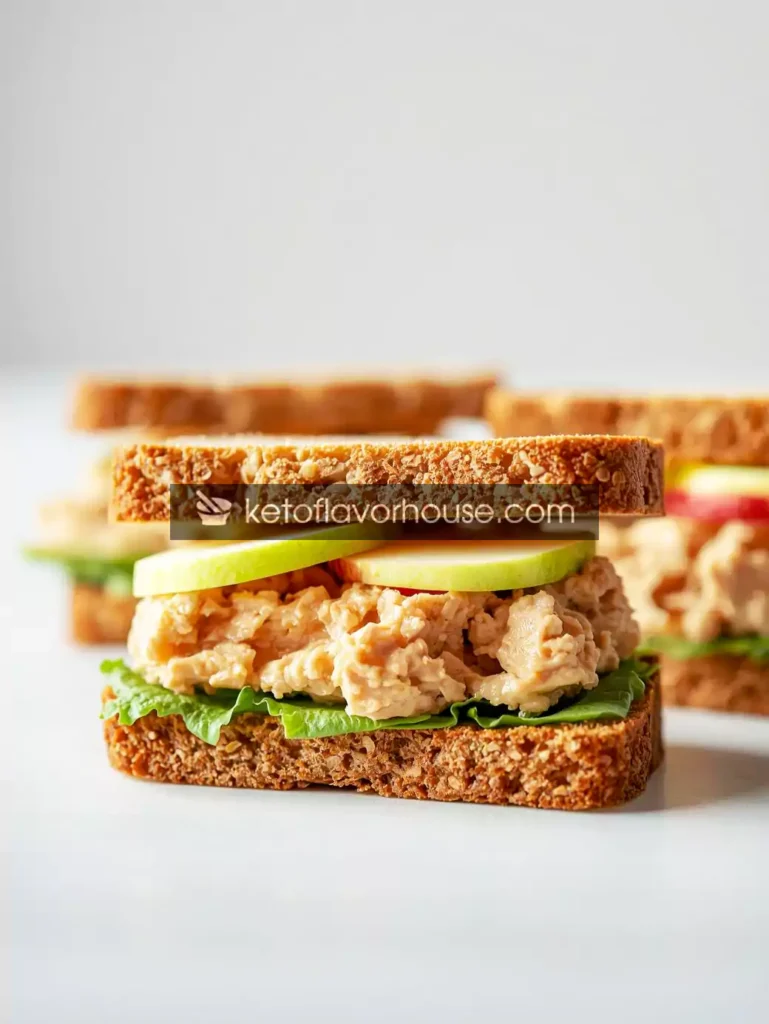This post may contains Amazon affiliate and other affiliate links. If you make a purchase through these links, I may earn a small commission at no extra cost to you. Your support helps me continue to provide quality content. I only recommend products I personally trust and believe will add value to your experience. For more details, please visit my Privacy Policy.
Introduction
There are mornings when nothing but a warm, comforting, and flavorful breakfast will do — the kind of meal that feels both nourishing and indulgent at the same time. For me, that dish is shakshuka. Traditionally from North Africa and the Middle East, shakshuka is a one-pan dish where eggs are poached in a spiced tomato and pepper sauce. But what makes this Bariatric Shakshuka (Low-Carb & High-Protein Egg Skillet) extra special is how perfectly it fits into a bariatric lifestyle.
If you’ve had bariatric surgery or are following a mindful, low-carb plan, you’ll know the constant balance: keeping protein high, carbs low, and flavors exciting. This recipe is exactly that — a rich tomato base filled with tender veggies, balanced with warm spices, and finished with perfectly set eggs that deliver protein in the most satisfying way.
This dish solves a craving I used to battle often: the longing for a hearty breakfast that didn’t leave me feeling heavy. After surgery, I found that simple toast or carb-heavy meals just weren’t an option anymore. I needed meals that felt filling without derailing my progress — and shakshuka became a favorite.
Today, I’m sharing my bariatric-friendly take on this timeless recipe. It’s perfect for anyone who wants a quick, flavorful skillet meal that looks like something from a café brunch menu but supports weight loss and post-op nutrition goals.
Why You’ll Love This Recipe
- 🍳 Protein-Packed – Each serving delivers high-quality protein from eggs.
- 🥘 One-Pan Wonder – Easy cleanup, just one skillet required.
- 🌱 Low-Carb Friendly – Made without bread or added sugars.
- ⏱️ Quick & Simple – Ready in under 30 minutes.
- 👨👩👧 Family-Friendly – Everyone at the table will enjoy it, not just bariatric eaters.
- ✨ Customizable – Easily adjust spice, add veggies, or change the flavor profile.
My Personal Experience
The first time I tried shakshuka after surgery, I was nervous. Would it be too spicy? Too heavy? Would I even tolerate it well? I still remember spooning out that first bite — soft-cooked egg blending with the warm tomato sauce, the fragrance of cumin and paprika rising up from the pan. It was cozy, flavorful, and surprisingly gentle on my stomach.
From that day, shakshuka became more than just a recipe; it became part of my comfort-food rotation. It was filling without being overwhelming, and I loved how easy it was to adjust the portion to match my smaller appetite. Now, whenever I make it, I feel like I’m giving myself both nourishment and a treat at the same time.
For bariatric eaters, that balance is everything. We want meals that satisfy cravings while keeping us aligned with our health goals — and this dish nails it every single time.
Required Equipment
🥘 Skillet (or Sauté Pan)
A wide skillet is essential because it allows the sauce to spread evenly and creates space for the eggs to poach without crowding. If you don’t have a skillet, a shallow saucepan works too.
🍴 Wooden Spoon or Silicone Spatula
You’ll need something sturdy to stir the sauce without scratching the pan. A silicone spatula also makes it easy to move the eggs gently once they’re set.
🔪 Sharp Knife & Cutting Board
Since shakshuka starts with a base of fresh vegetables, a sharp knife will make prep faster and safer.
🥄 Measuring Spoons & Cups
For spices, especially, precision helps balance the flavor without overpowering the dish.
🥄 Small Ladle (Optional)
If you want to scoop out individual servings neatly, a small ladle works beautifully.
Ingredients & Substitutions
Here’s everything you’ll need for Bariatric Shakshuka (Low-Carb & High-Protein Egg Skillet):
- 1 tablespoon olive oil – Adds richness without excess fat. (Substitute: avocado oil or light cooking spray if you want fewer calories.)
- 1 medium onion, diced – Builds sweetness and depth. (Substitute: shallots for a lighter flavor.)
- 1 red bell pepper, diced – Adds natural sweetness and vitamin C. (Substitute: green bell pepper for a slightly more bitter note.)
- 2 garlic cloves, minced – For bold flavor. (Substitute: garlic powder if fresh isn’t available, but reduce amount slightly.)
- 1 teaspoon ground cumin – Warm, earthy spice that pairs well with eggs. (Substitute: coriander for a lighter flavor.)
- 1 teaspoon smoked paprika – Adds smokiness and color. (Substitute: regular paprika + a pinch of chili powder.)
- ¼ teaspoon chili flakes (optional) – For gentle heat. (Substitute: omit for a milder dish or add cayenne for more spice.)
- 1 (14 oz) can crushed tomatoes – Forms the rich sauce. (Substitute: fresh ripe tomatoes blended for a lighter taste.)
- Salt and pepper, to taste – Balances the flavors.
- 4 large eggs – The star protein. (Substitute: egg whites only for lower fat and calories, or use 2 whole eggs + 2 whites for balance.)
- Fresh parsley or cilantro, chopped – For garnish and freshness.
👉 Bariatric Tip: Tomatoes and peppers are full of vitamins and fiber, while eggs provide lean protein that is essential for satiety and healing after surgery. This balance of nutrients makes the dish both filling and gentle on digestion.
How to Make Bariatric Shakshuka
Step 1: Sauté the Vegetables
Heat olive oil in your skillet over medium heat. Add onions and bell peppers, cooking until softened and fragrant, about 5–7 minutes. Stir occasionally to avoid browning too quickly.
💡 Tip: Don’t rush this step. The sweetness of caramelized onions creates the flavor foundation.
Step 2: Add Garlic & Spices
Stir in minced garlic, cumin, paprika, and chili flakes. Cook for 1–2 minutes until fragrant. This step blooms the spices and intensifies their flavor.
💡 Tip: Keep heat medium-low to avoid burning garlic.
Step 3: Add Tomatoes
Pour in the crushed tomatoes. Stir well, reduce heat slightly, and let the sauce simmer uncovered for 10–12 minutes until it thickens. Season with salt and pepper.
💡 Tip: If sauce feels too acidic, add a pinch of sweetener to balance.
Step 4: Make Wells for Eggs
Using a spoon, create 4 small wells in the sauce. Crack an egg into each well.
💡 Tip: Crack eggs into a small bowl first, then gently slide them in to prevent breaking yolks.
Step 5: Cover & Poach
Cover the skillet and cook 5–7 minutes, until whites are set but yolks are still slightly runny. For firmer yolks, cook an additional 2–3 minutes.
💡 Tip: Keep checking — eggs go from soft to overcooked quickly.
Step 6: Garnish & Serve
Remove from heat, sprinkle with fresh parsley or cilantro, and serve hot.
Common Mistakes to Avoid
- ❌ Overcooking the eggs – Watch closely; the yolks should stay creamy.
- ❌ Skipping the simmer – A watery sauce will not hold the eggs properly.
- ❌ Overcrowding the pan – Leave enough space so eggs cook evenly.
- ❌ Adding too much oil – A tablespoon is enough; excess adds calories without benefit.
Pro Tips for Best Results
- ✅ Use room-temperature eggs for more even cooking.
- ✅ Simmer sauce longer if you prefer a richer, concentrated flavor.
- ✅ For extra protein, stir in a spoonful of plain Greek yogurt just before serving.
- ✅ Add leafy greens like spinach at the tomato stage for extra nutrients.
Bariatric Nutrition & Strategy
Eggs are one of the most bariatric-friendly foods: soft, high in protein, and versatile. Pairing them with a tomato-based sauce not only boosts flavor but also ensures you’re eating fiber and micronutrients that aid digestion and satiety.
This dish fits perfectly into a bariatric plan:
- Protein-first approach – Eggs keep you full and support healing.
- Low carb – Just veggies and tomatoes, making it safe post-op.
- Balanced nutrition – Iron, vitamins A and C, and healthy fats.
For a complete bariatric plate, pair shakshuka with a small side of Greek yogurt or a sprinkle of low-fat cheese for extra protein.
Variations You Can Try
- Green Shakshuka – Use spinach, zucchini, and green peppers instead of tomatoes.
- Cheesy Shakshuka – Add a sprinkle of reduced-fat cheese before serving.
- Spicy Shakshuka – Increase chili flakes or add jalapeños.
- Mediterranean Twist – Add olives and feta for a tangy edge.
Tips for This Recipe
- Serve directly in the skillet for a rustic presentation.
- Add a small sprinkle of nutritional yeast for cheesy flavor without extra fat.
- For batch cooking, double the sauce and refrigerate — just reheat and crack eggs fresh when serving.
Optional Additions
- Ground turkey or chicken sausage – Extra protein, but keep it lean.
- Spinach or kale – Adds fiber and micronutrients.
- Mushrooms – Earthy flavor and texture without many calories.
Serving Ideas
- Breakfast with a small slice of low-carb bread (if tolerated).
- Light lunch with a side salad.
- Dinner with roasted vegetables or cauliflower rice.
- Great for meal prep: make the sauce ahead, add eggs fresh.
Storage Recommendations
- Refrigerator – Sauce can be stored up to 4 days in an airtight container.
- Freezer – Sauce only (without eggs) can be frozen up to 3 months.
- Reheating – Reheat sauce in skillet, then add fresh eggs to cook. Avoid reheating cooked eggs as they become rubbery.
Frequently Asked Questions (FAQ)
1. Can I freeze shakshuka?
Yes — but only the sauce. Eggs don’t freeze well, so make those fresh.
2. Can I use egg whites only?
Absolutely! This lowers fat and calories while keeping protein high.
3. How is this good for bariatric diets?
It’s high in protein, soft-textured, low-carb, and portion-controlled. Perfect for post-op eating.
4. Can I make this in an air fryer?
Yes — prepare the sauce separately, then bake eggs in small ramekins of sauce in the air fryer until set.
5. What if I don’t like spicy food?
Skip the chili flakes; the cumin and paprika provide flavor without heat.
6. Can I meal prep this?
Yes — prep the sauce in advance. Add eggs fresh when ready to eat.
7. Can I add cheese?
Yes, but choose reduced-fat cheese to keep it bariatric-friendly.
Nutritional Breakdown (Per Serving – 1 of 4 servings)
- Calories: 160
- Protein: 10g
- Fat: 10g
- Total Carbs: 9g
- Fiber: 2g
- Net Carbs: 7g
- Sugar: 5g
- Sodium: 320mg
Recipe Snapshot
- Prep Time: 10 minutes
- Cook Time: 20 minutes
- Total Time: 30 minutes
- Course: Breakfast, Brunch, Dinner
- Cuisine: Middle Eastern, Bariatric-Friendly
- Servings: 4
- Calories per Serving: 160

Bariatric Shakshuka (Low-Carb & High-Protein Egg Skillet) Recipe
Ingredients
- 1 tbsp olive oil
- 1 onion diced
- 1 red bell pepper diced
- 2 garlic cloves minced
- 1 tsp cumin
- 1 tsp smoked paprika
- ¼ tsp chili flakes optional
- 1 can 14 oz crushed tomatoes
- Salt & pepper
- 4 large eggs
- Fresh parsley or cilantro
Instructions
- Heat oil in skillet, sauté onion and bell pepper until soft.
- Add garlic and spices, cook 1–2 minutes.
- Stir in tomatoes, simmer 10–12 minutes.
- Make 4 wells in sauce, crack eggs into each.
- Cover and cook 5–7 minutes until eggs are set.
- Garnish with parsley or cilantro, serve hot.









